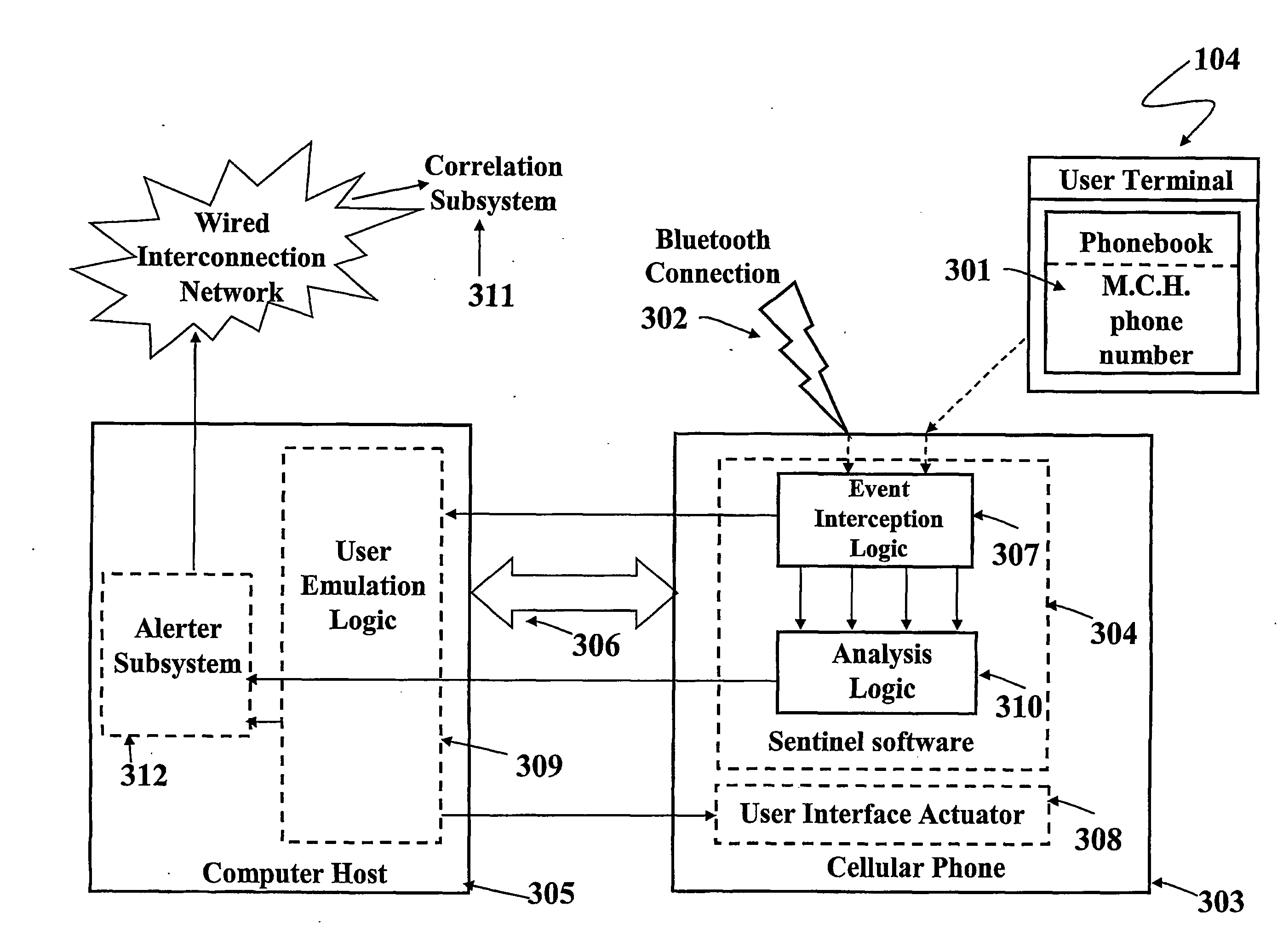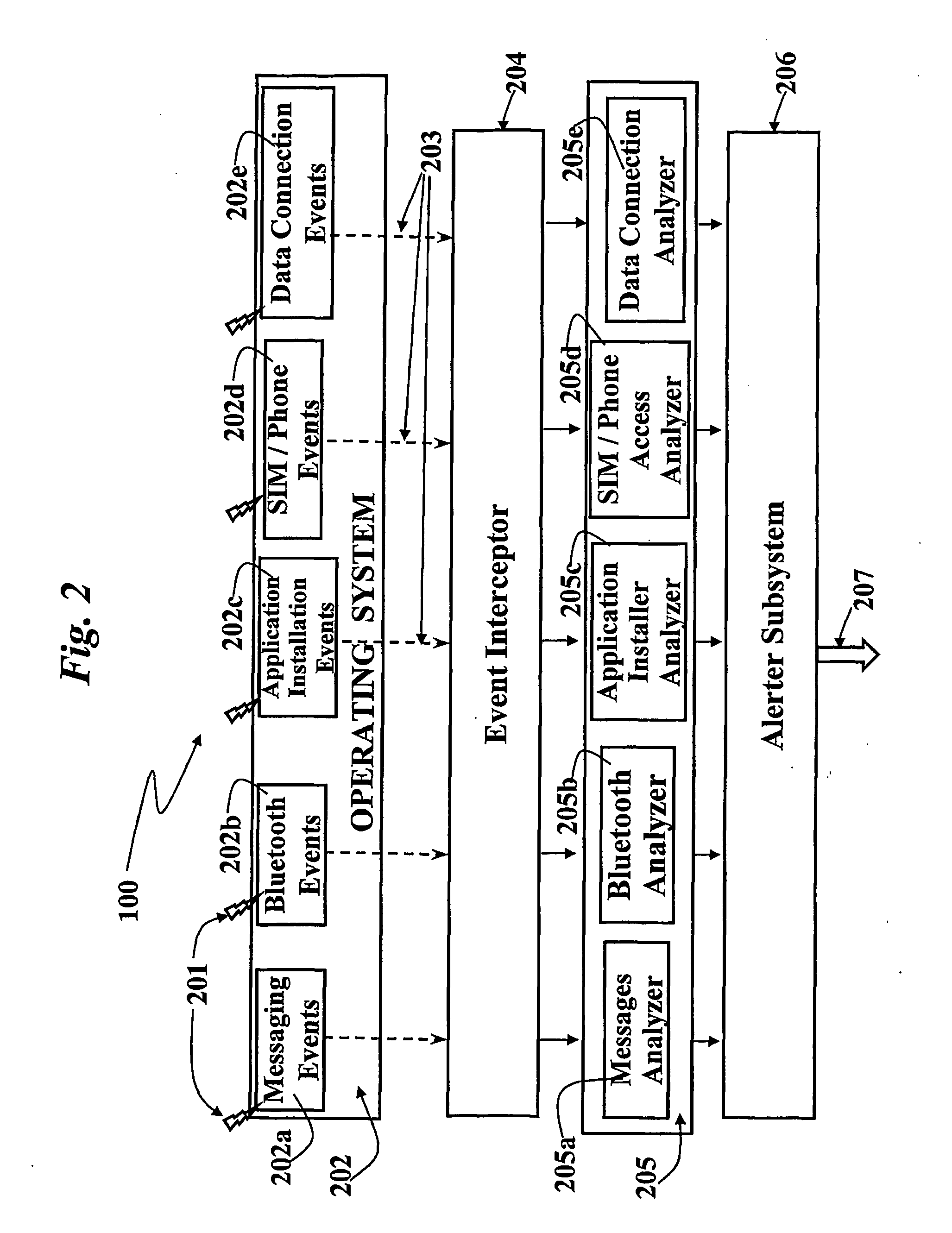Method and System for Identifying Malicious Messages in Mobile Communication Networks, Related Network and Computer Program Product Therefor
a mobile communication network and malicious message technology, applied in the field of malicious message identification methods and systems, can solve the problems of anti-virus systems, system needs to be continuously updated, and the anti-virus system can only recognize attacks that have already been identified in the wild
- Summary
- Abstract
- Description
- Claims
- Application Information
AI Technical Summary
Benefits of technology
Problems solved by technology
Method used
Image
Examples
Embodiment Construction
[0053]FIG. 1 shows a set of specific components included in an exemplary architecture described herein. A first component 100, called “Sentinel”, is installed on a certain number of Mobile Terminals 101 to increase the probability of capturing an anomaly.
[0054]The Sentinel 100 monitors some specific resources of the Mobile Terminal 101. The Sentinel 100 has stored therein a (first) set of patterns or rules that identify the ordinary expected behaviour of the Mobile Terminal 101 in terms of messages passing (i.e. transmitted or received) by the terminal 101. Whenever the Sentinel 100 detects something “out of the ordinary” (that is any messages that do not comply with the ordinary patterns or rules, such as, e.g., an application that creates a hidden network connection, or sends a message without notifying the user, etc.), the Sentinel 100 forwards a identification message including all the relevant information on the message(s) held to represent a candidate malicious message to a Ce...
PUM
 Login to View More
Login to View More Abstract
Description
Claims
Application Information
 Login to View More
Login to View More - R&D
- Intellectual Property
- Life Sciences
- Materials
- Tech Scout
- Unparalleled Data Quality
- Higher Quality Content
- 60% Fewer Hallucinations
Browse by: Latest US Patents, China's latest patents, Technical Efficacy Thesaurus, Application Domain, Technology Topic, Popular Technical Reports.
© 2025 PatSnap. All rights reserved.Legal|Privacy policy|Modern Slavery Act Transparency Statement|Sitemap|About US| Contact US: help@patsnap.com



